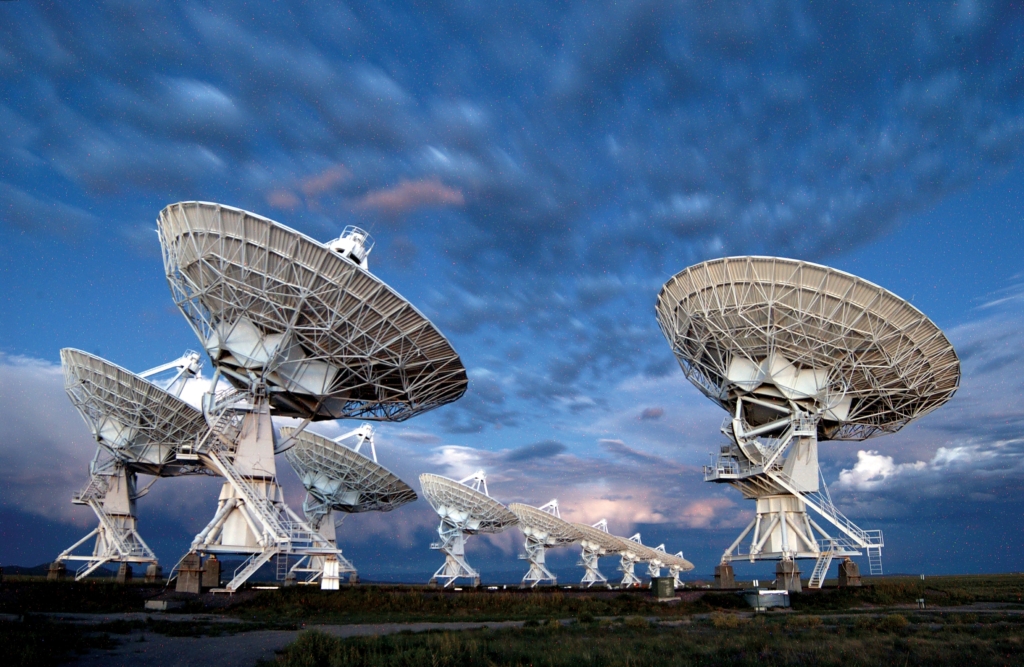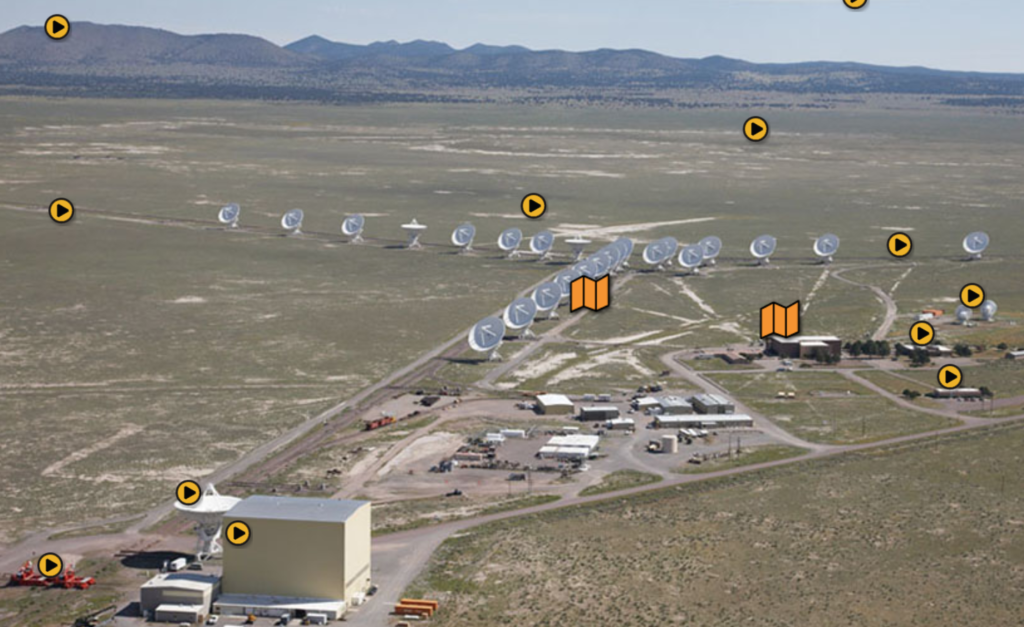What configuration is the VLA in right now?
Below is a chart with the current VLA configuration highlighted and a map of where each antennae is located.
What is a configuration?
The Very Large ArrayVery Large ArrayThe Very Large Array is a customizable interferometer that varies between 2/3 of a mile to 22 miles long depending on the time of year. It is considered to be one of the most advanced radio telescope arrays on Earth with 28 antennas in Socorro, New Mexico. has 27 active antenna dishes. Each of these 230 ton antennas can be moved to different locations with the help of a transporterTransporterThe two VLA transporters are special-purpose vehicles designed specifically to pick up and carry the VLA's 230-ton dish antennas. The transporters run on two parallel sets of U.S. gauge railroad tracks -- four rails in total. Weighing 90 tons themselves, the transporters are powered by 380- and 400-horsepower (respectively) diesel engines that in turn power a hydraulic system. That system drives the wheels using radial hydraulic motors and also powers the jacks that lift the antennas off their concrete-pier mountings. The wheels are mounted on assemblies at each corner of the vehicle that can rotate to allow "turning" the 90-degree rail intersections that connect each antenna mounting station with the main rail line for each arm of the VLA's "Y" layout.. This lets astronomers place them in several patterns known as configurations. The antennas can be clustered together within an area no more than 0.6 miles wide, or spread across a diameter of 22 miles. Each configuration provides unique benefits to astronomers as well as a different visual experience to visitors. Below, the current VLA configuration is listed with a visual representation of that particular configuration.
Want to see a different configuration?
Try clicking on any configuration in the list to see how the antenna locations change. Note how the scale changes with each configuration. You can then zoom and pan to explore the array.








